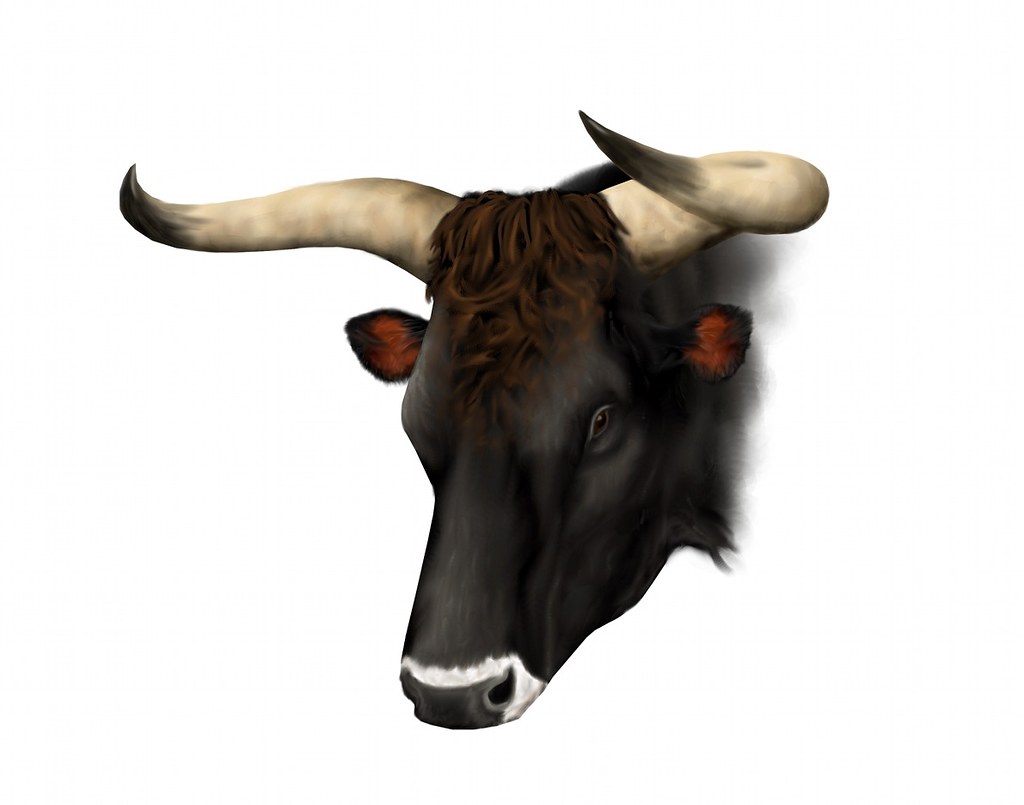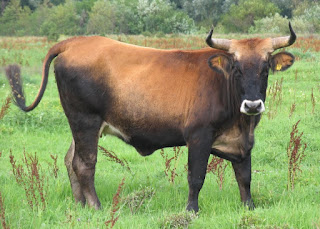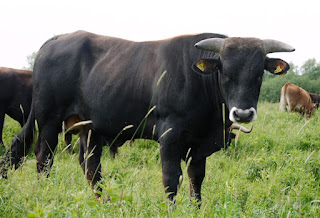All animals
change during individual development (ontogeny), and this process of changing
continues until death. For “breeding-back”, it is important to look at how a
bull or cow might change during its life as it is relevant for selection.
Usually, it
is impossible to judge an the bull or cow properly before the age of 3 years.
The bodily proportions and shape are still going to change considerably, and
the horns are not nearly developed enough.
Usually,
all calves are rather long-legged animals, proportioned like deer. During its
life, the legs always get shorter and the trunk longer. Also, the trunk gets
heavier. A bull usually does not have its full bulk until the age of 6 years
(Frisch, 2010), and bulk continues increasing. So if a young bull at the age of
3 years already is proportioned and shaped like an aurochs, you can assume that
it will end up heavier and more longish at reproductive age. Also, the hump is
a trait that increases with age. A bull that shows no hump at the age of 3
might still develop one later on.
Also, horn
seem to continue to grow all life long, and they also slightly alter their
shape by continuing the curve. Horns that might not look much aurochs-like at
the age of three might end up satisfying by the age of five years.
I give you
some examples for changing body shape and horns in Taurus cattle now that I was
able to find thanks to an extensive photo archive I was provided by Matthias
Scharf from the ABU. Most of the photos are courtesy of Matthias Scharf so
please do not replicate without permission.
Lamarck
On the
upper photo, you see Lamarck at the age of three years. Although one would
assume this bull is more or less adult based on its looks, and simply lacks the
inwards-curve in its horns, he developed very clearly inwards-facing horn tips
later on. Not quite as spiral-shaped as in an aurochs, but satisfying. The
second photo shows him at the age of eight years.
42 604
This
nameless and extremely beautiful cow had horns that did not curve that much
either when I saw her in 2013, when she was two years old. One year later, her
horns developed a nice shape – in most aurochs cows, they would probably still
be more curled, but those are satisfying horns.
Lerida
Lerida is
and always has been one of my favourite Taurus cows. The upper photo shows her
with a nice slender body at the age of five. Three years later, she “put on
some weight”, but still is a beautiful individual.
42 623
42 623 is
the current breeding bull at Hellinghauser Mersch. The upper photo shows him at
the age of one and a half year, he has squarely built proportions and a body of
acceptable bulk. In 2015, the year the lower photo was taken, he developed a
rather massive body, but the trunk-height ratio still seems to be ok, the
shoulder hump is more pronounced and he is also one of the largest bulls.
We should
not forget the ontogenic changes of wild-type colour as well. Phenotypical E+ is the only colour variant that shows
ontogenic changes. All wildtype coloured calfs are born in a chestnut colour –
during their first life months the colour changes (or: should change) to black
in bulls, and cows darken only on certain areas (depending on the degree of
sexual dichromatism). If the wildtype coloured calf is going to show dilution
factors, it will show them later on, when the change in colour appears.
Therefore, also Chianina or Podolian calfs are born in a chestnut brown colour,
but their fur looses the pigment in the aftermath.























